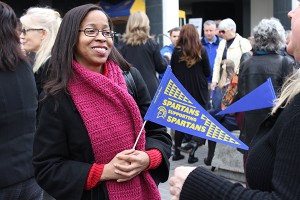The end of the semester is fast approaching – where have all of those weeks gone? Now might be a very good time to RE-engage students who seem to have meandered off course or who could benefit from help reconnecting and refocusing. Skim the list below, and consider what might be useful for you and your students.
- Reach out to students who seem to have disappeared from view. Check your records, see who has fallen behind in their assignments or who is simply not showing up for class. A quick email asking them to check in with you could mean the difference between them getting back on track and them failing the class. If possible, schedule extra office hours (in person or virtual) to have the chance to speak with them. Show you care. Urge them to try. Help them craft a plan to catch up, as much as is possible, given the structure and requirements of your course. Familiarize yourself with university and department policies about granting students incompletes, in case this becomes appropriate. Be careful to be consistent and equitable in any accommodations you extend to them.
- Be prepared to help students figure out their standing in the course. You have likely spelled out how grades are determined in your syllabus. You may have set things up so that students can track their points and scores. But I am always surprised by how many students still ask such things as “What grade am I getting so far?” or “How well do I have to do on the Final to get a C?” Students who become discouraged by how they think they are doing are particularly likely to avoid seeking you out and having to confront what they fear their status in the course to be.
- Consider asking your students to write a letter to the next group of students who will take your class. Have them include a few sentences about how the course relates to their academic or personal interests, about how something they have done or learned in the course has been significant for them, or about the study strategies they’ve found most helpful. These letters may be useful and informative for future students, and interesting and rewarding for you to read. But the ones who may benefit the most from them may well be their authors: the process of thinking about these prompts can serve to re-engage and re-focus students who have become somewhat disconnected or unfocused.
- Remind students of the importance of a good time management plan, most especially at this point in the school year. Encourage them to list the papers, projects, exams and other academic requirements they need to complete in the coming weeks, and to create a calendar where they can map out thoughtfully what they need to do when to get it all done. Have them incorporate their non-school obligations into the calendar. Have them share and discuss their calendars with one or more other students in the class. The more specific they can be about what they need to do and how they plan to do it, the more likely they will be able to focus intentionally and constructively.
Now might also be a good time to review the variety of supports available to you and your students through our Counseling and Psychological Services and our Student Health Center. Please add your own strategies using the comment link below.
